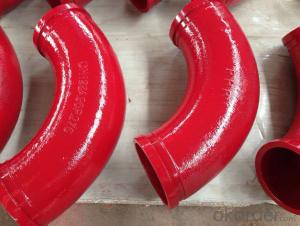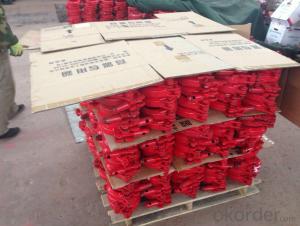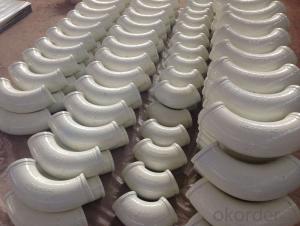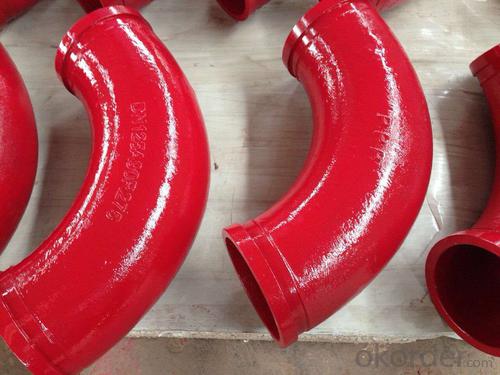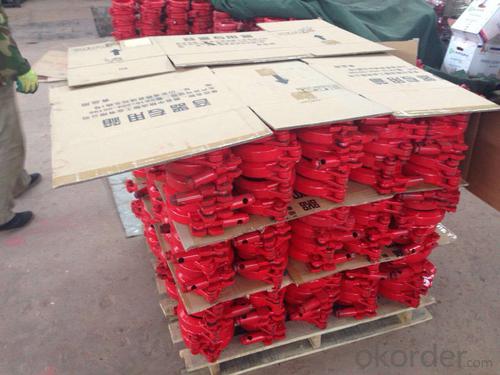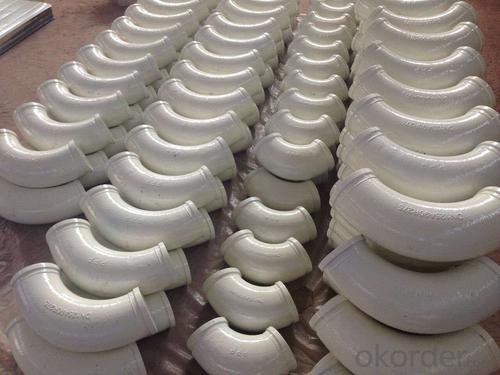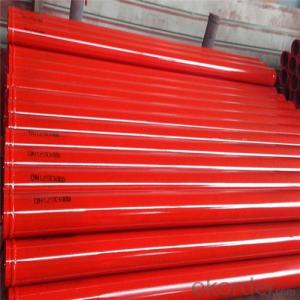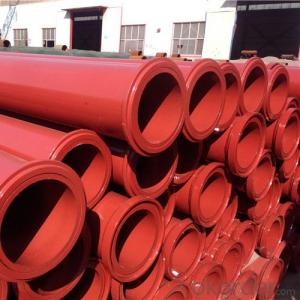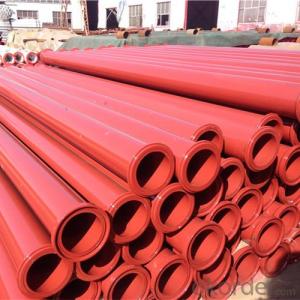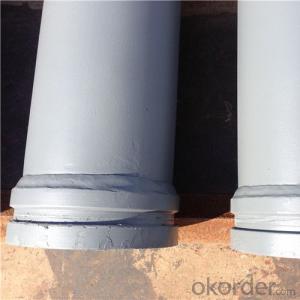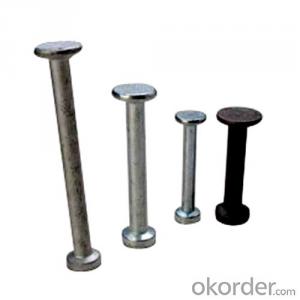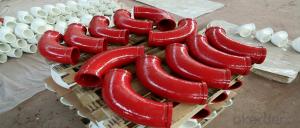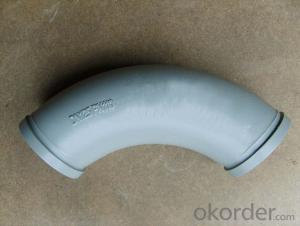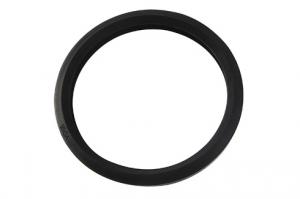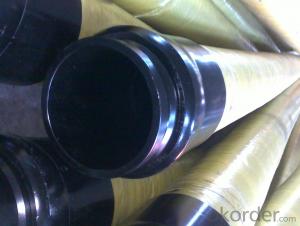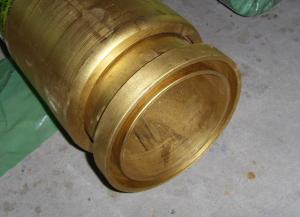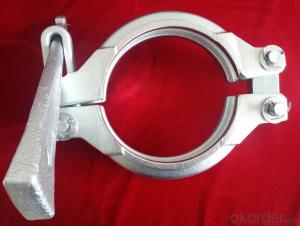CONCRETE DELIVERY ELBOW TYPE 90DEG R275 DN112
- Loading Port:
- Tianjin
- Payment Terms:
- TT OR LC
- Min Order Qty:
- 100 pc
- Supply Capability:
- 10000 pc/month
OKorder Service Pledge
OKorder Financial Service
You Might Also Like
concrete pump elbow table
Wear-resistant Single or Double Concrete Pump Elbow | |||||||
Type | Singe Elbow | Double Elbow | |||||
Model | DN125 | DN150 | DN175 | DN125 | |||
Material | Casting Steel ,ST52 | Inside | 40Cr | Outside | |||
Size | R275*90° | R275*90°+110 | 36° | F2000 | R275*90° | R275*90°+110 | |
R275*45° | R275*90°+211 | R400*30° | A3000 | R275*45° | R275*90°+211 | ||
R275*25° | R275*90°+411 | R400*45° | 471B | R275*25° | R275*90°+411 | ||
R275*20° | R275*90°+424 | R400*30° | 571B | R275*20° | R275*90°+424 | ||
R275*15° | R275*45°+170 | R488*90° | A1000 | R275*15° | R275*45°+170 | ||
R180*90° | R275*45°+310 | R500*90 | C1000 | R180*90° | R275*45°+310 | ||
R232*60° | R275*45°+310 | R280*90° | B2000 | R232*60° | R275*45°+310 | ||
R240*36° | 20°Lengthen | R240*36° | 20°Lengthen | ||||
R240*30° | 25°+740 | R240*30° | 25°+740 | ||||
R240*15° | 40°Zoomlion | R240*15° | 40°Zoomlion | ||||
R385*29° | R385*29° | ||||||
R315*33° | R315*33° | ||||||
Technic | Forged | ||||||
Average life | 25,000cubic | 50,000cubic | |||||
Appliciation | Used in concrete transport in construction work | ||||||
1.product profile:The double layer concrete pump elbow is developed by ourselves through new
technology and process.
2.characteristic:the inner layer of this concrete pump elbow undergoes heat treatment,and then the rigitiry can reach 62-65HRC.
3.characteristic:the outer layer of the concrete pump elbow possess good toughness properties
to protect the inner layer,so the security of the elbow is improved.
4.life:the experiment done abroad shows that the life of our concrete pump elbow can reach 35000-50000cbm,got the customers' praise
5.Beside the double layer concrete pump elbow,we produce all kinds of concrete pump parts,
straight pipe hose flange coupling and so on.
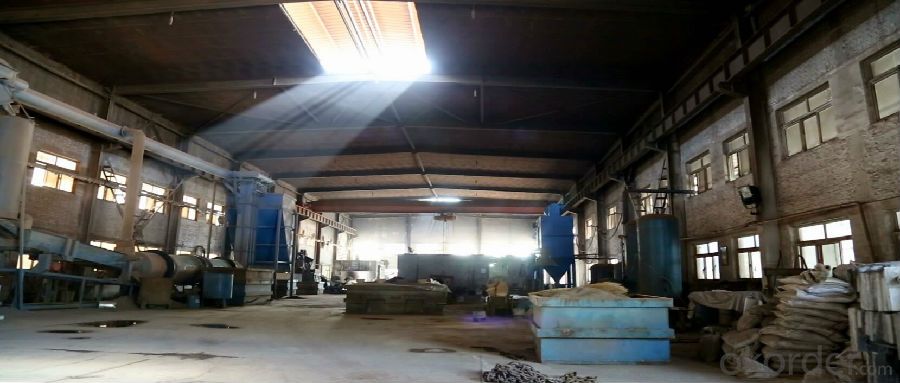
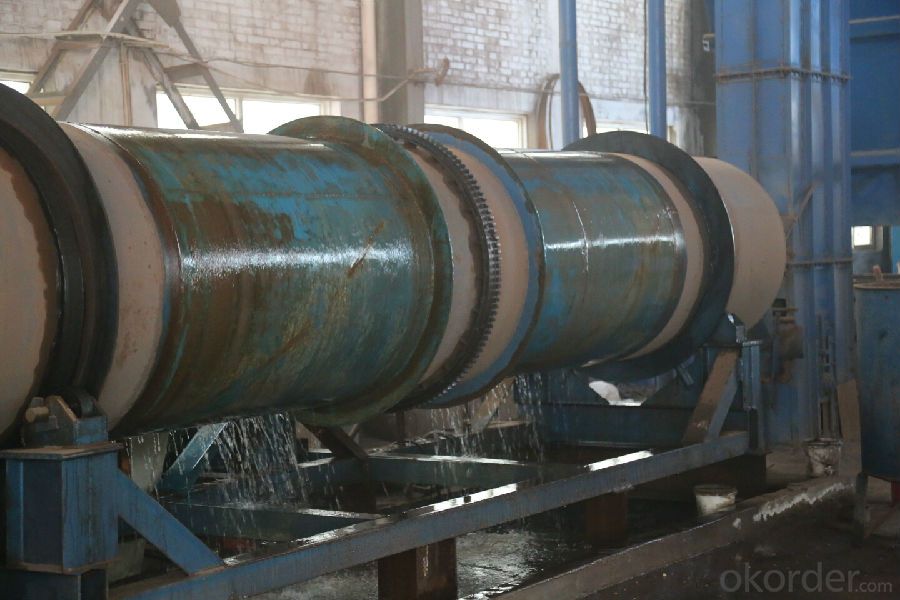
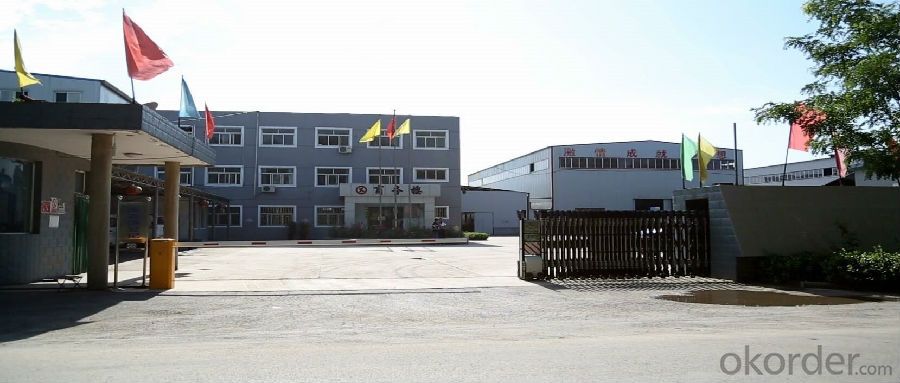
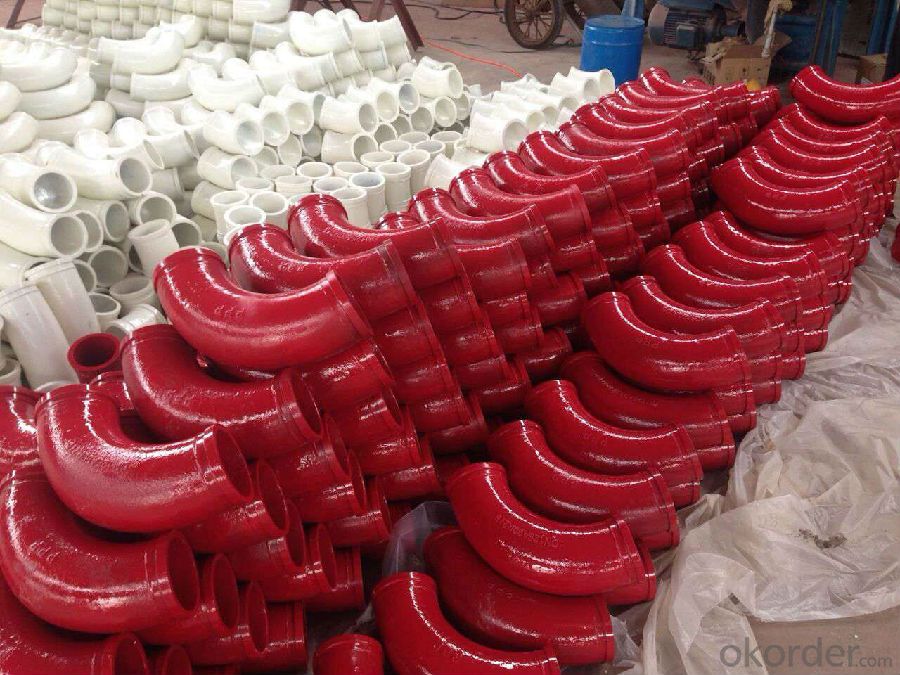
- Q: How often should concrete pump agitator motors be inspected and replaced?
- Concrete pump agitator motors should be inspected regularly to ensure they are functioning properly and to identify any potential issues before they become major problems. The frequency of inspections depends on various factors such as the workload and conditions in which the motor operates. However, a general guideline is to inspect the agitator motors at least once a year or after every 500 hours of operation, whichever comes first. In terms of replacement, it is essential to monitor the motor's performance closely. If there are any signs of motor failure, such as overheating, excessive noise, or decreased efficiency, it may be necessary to replace the motor sooner rather than later. Additionally, if the motor fails any inspections or tests, it should be replaced immediately to avoid any safety hazards or disruptions in the concrete pumping process. Ultimately, the key is to prioritize regular inspections and maintenance to extend the lifespan of the agitator motors and ensure they are operating at their optimal level. Following manufacturer guidelines, consulting with experts, and conducting routine checks will help determine the appropriate timing for inspections and replacements.
- Q: Are there any specific guidelines for the installation of pistons or cylinders in concrete pump spare parts?
- Yes, there are specific guidelines for the installation of pistons or cylinders in concrete pump spare parts. It is important to follow manufacturer instructions and recommendations for proper alignment, lubrication, and torque specifications during installation. Additionally, regular inspection and maintenance are crucial to ensure optimal performance and longevity of the pump parts.
- Q: How often should concrete pump control panels be inspected and replaced?
- Concrete pump control panels should be inspected regularly, ideally on a monthly basis, to ensure they are functioning properly and to identify any potential issues. However, the frequency of replacement will depend on the specific condition of the control panel, as well as the manufacturer's recommendations. If any signs of wear or malfunction are detected during the inspection, it may be necessary to replace the control panel sooner.
- Q: What are the performance characteristics of concrete pump?
- Wear resistant alloy glasses plate and floating cutting ring, long service life
- Q: How do I identify the right spare part for my concrete pump model?
- To identify the right spare part for your concrete pump model, there are a few steps you can follow: 1. Refer to the manufacturer's manual: The manufacturer's manual is the best place to start as it usually provides detailed information about the concrete pump model and the corresponding spare parts. Look for the part numbers, descriptions, and any specific instructions for ordering or replacing parts. 2. Research online: Use the internet to search for your concrete pump model and related spare parts. Many manufacturers have official websites or authorized distributors that offer product catalogs or online databases where you can search for the specific part you need. Look for compatibility charts or diagrams that match your concrete pump model with the appropriate spare parts. 3. Consult with a specialist: If you're unsure about the compatibility or availability of spare parts for your concrete pump model, it's a good idea to consult with a specialist. Reach out to the manufacturer's customer service or contact a local distributor or service center that specializes in concrete pumps. Provide them with the details of your pump model and the specific part you are looking for, and they should be able to guide you in identifying the right spare part. 4. Check with other concrete pump owners: Reach out to other concrete pump owners or operators who have the same or a similar model as yours. They may have experience with finding and replacing spare parts and can provide recommendations or tips on where to look or who to contact. Remember, it is crucial to ensure that the spare part you choose is compatible with your concrete pump model to avoid any damage or malfunction. Taking the time to research and consult with experts will help you identify the right spare part and keep your concrete pump running smoothly.
- Q: Are there any specific tools or equipment required for the installation of concrete pump spare parts?
- Yes, there are specific tools and equipment required for the installation of concrete pump spare parts. Some common tools include wrenches, socket sets, screwdrivers, hammers, and pliers. Additionally, specialized equipment like cranes, lifters, and hoists may be needed for lifting and positioning heavy components. It is important to use the appropriate tools and equipment to ensure proper installation and safety.
- Q: How do concrete pump spare parts help in the pumping process?
- Concrete pump spare parts play a crucial role in the pumping process by ensuring the smooth and efficient operation of the equipment. These spare parts, such as seals, cylinders, pistons, and valves, help maintain the integrity of the pump and prevent potential breakdowns or malfunctions. They also assist in controlling the flow and pressure of the concrete, allowing for precise and accurate placement. In summary, concrete pump spare parts are essential components that enhance the reliability, performance, and overall productivity of the pumping process.
- Q: What is the role of a concrete pump hopper grate spring?
- The primary function of a concrete pump hopper grate spring is to offer tension and support to the hopper grate within a concrete pump. It is typically crafted from robust and flexible materials like steel or rubber, and its purpose is to securely hold the hopper grate in place while allowing for necessary movement and flexibility during the concrete pumping process. By preventing the hopper grate from becoming dislodged or damaged by the force and vibrations produced by the concrete pump, the hopper grate spring proves invaluable. It guarantees that the grate remains appropriately aligned and in its proper position, facilitating a smooth and efficient flow of concrete into the pump. Moreover, the grate spring lessens the impact and stress experienced by the hopper grate, thereby enhancing its lifespan and minimizing the requirement for frequent repairs or replacements. Acting as a buffer, it absorbs and distributes the substantial forces exerted on the grate due to the weight and pressure of the concrete being pumped. In conclusion, the concrete pump hopper grate spring plays a pivotal role in preserving the integrity and functionality of the hopper grate, thereby ensuring the safe and efficient operation of the concrete pump.
- Q: What are the signs of a damaged or malfunctioning electric motor?
- A damaged or malfunctioning electric motor can be identified by several signs. Firstly, unusual noises like grinding, squealing, or banging sounds are typically indicative of a problem. Such sounds may suggest that the motor's bearings are worn out or that there is an issue with its internal components. Secondly, excessive heat is another sign of a damaged electric motor. If the motor feels hotter than usual to the touch, it could indicate that the motor is working harder than it should or that there is an issue with its cooling system. Thirdly, a motor that frequently trips the circuit breaker or blows fuses clearly indicates a malfunction. This could be caused by an electrical fault within the motor or an overload due to a faulty component. Furthermore, a damaged electric motor may exhibit reduced performance or a noticeable decrease in power output. This can be observed as a decrease in speed or torque produced by the motor, or even a complete inability to start or function properly. Lastly, excessive vibration or shaking of the motor may indicate misalignment or a problem with its mounting. If not addressed promptly, this can lead to further damage. If any of these signs are noticed, it is recommended to immediately cease using the motor and seek the assistance of a qualified technician or electrician to diagnose and repair the issue. Ignoring or continuing to use a damaged motor can result in further damage and potentially dangerous situations.
- Q: What are the indications of a clogged or damaged concrete pump filter?
- The indications of a clogged or damaged concrete pump filter can include decreased flow rate, loss of pressure, irregular or uneven concrete distribution, increased wear and tear on the pump system, and potential blockages or breakdowns in the pump.
Send your message to us
CONCRETE DELIVERY ELBOW TYPE 90DEG R275 DN112
- Loading Port:
- Tianjin
- Payment Terms:
- TT OR LC
- Min Order Qty:
- 100 pc
- Supply Capability:
- 10000 pc/month
OKorder Service Pledge
OKorder Financial Service
Similar products
Hot products
Hot Searches
Related keywords
